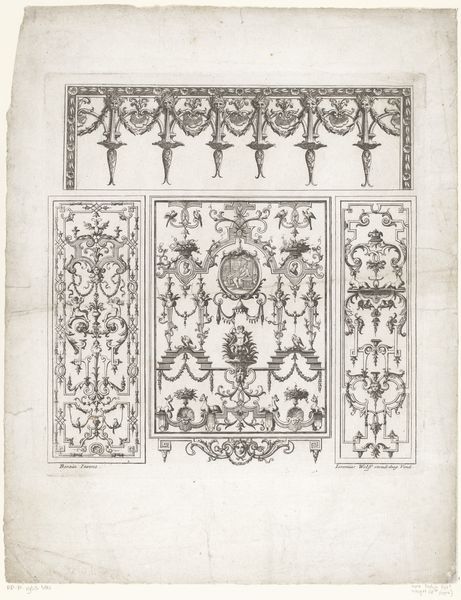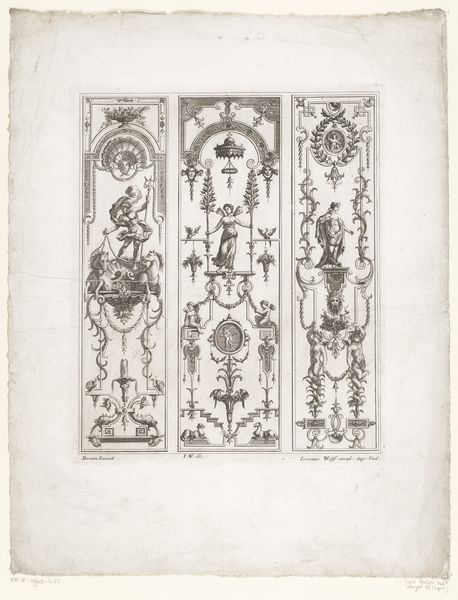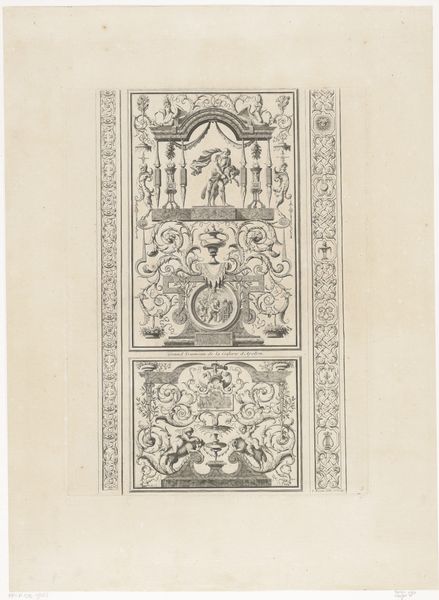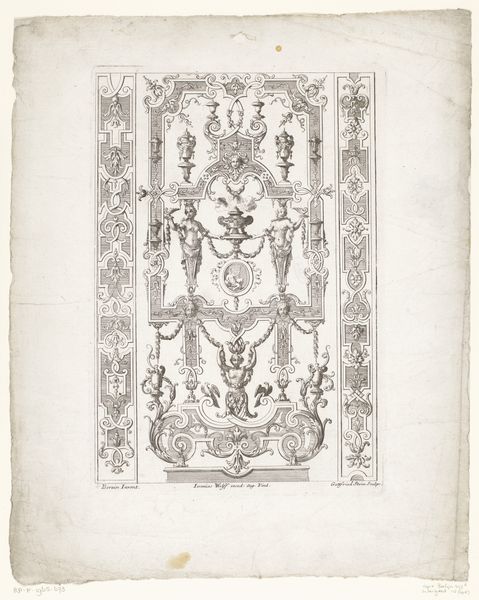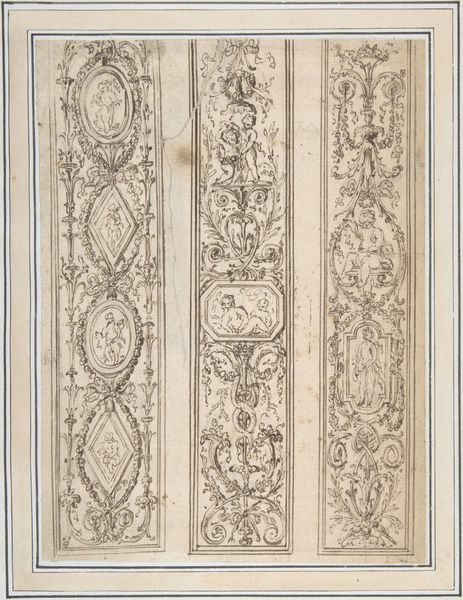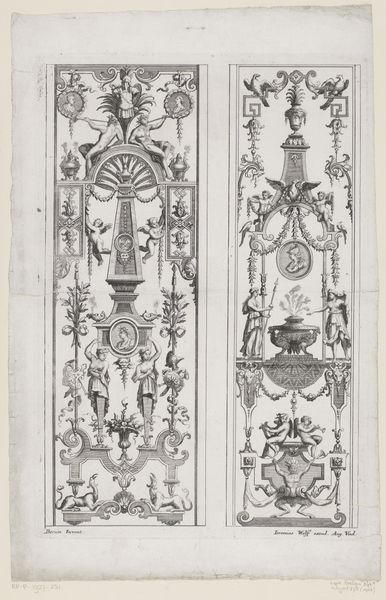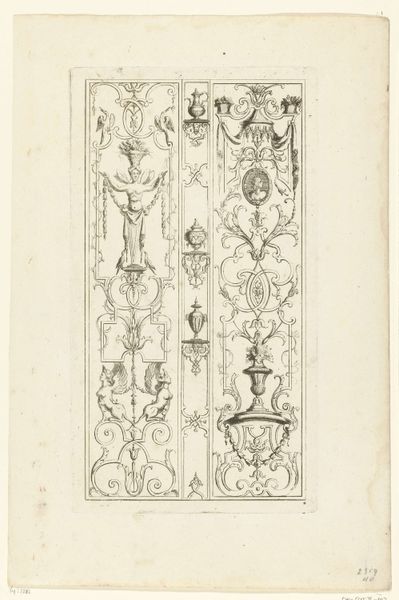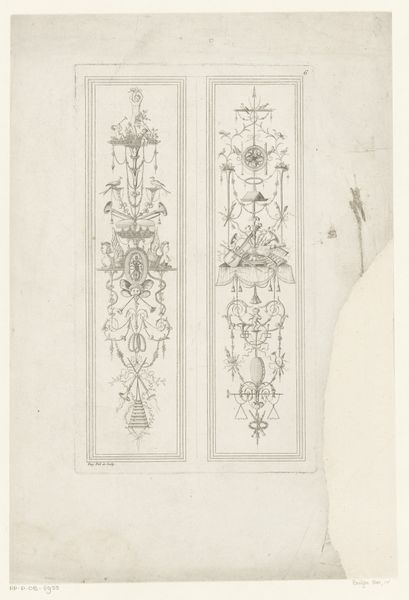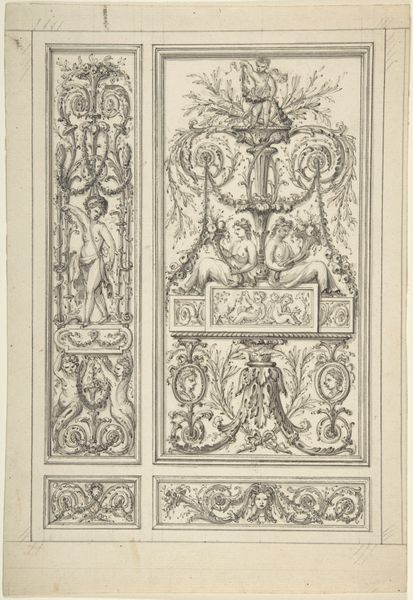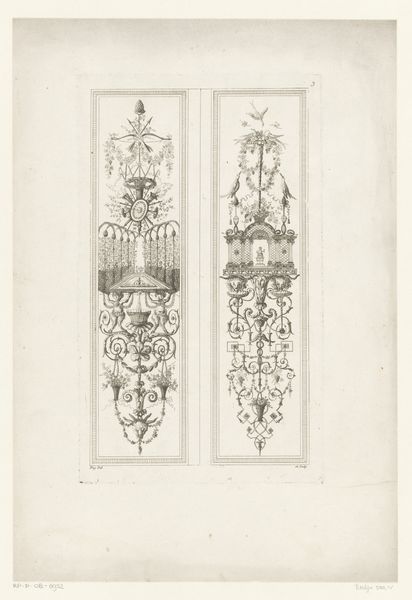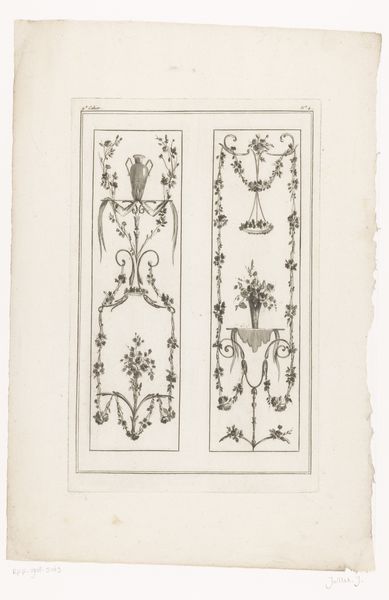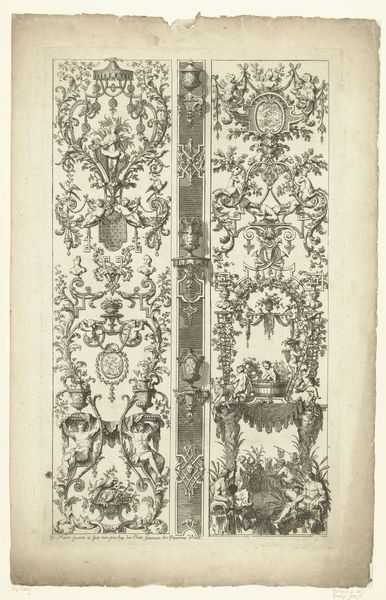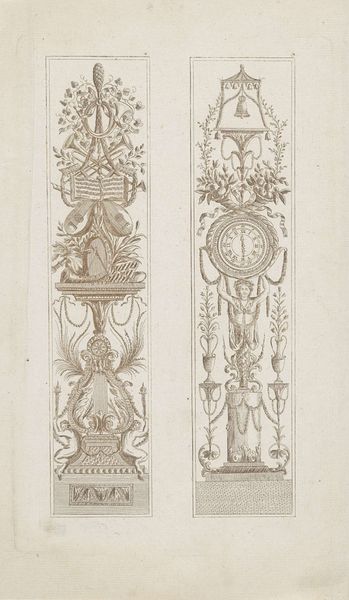
print, engraving
#
baroque
# print
#
figuration
#
history-painting
#
decorative-art
#
engraving
Dimensions: height 354 mm, width 246 mm
Copyright: Rijks Museum: Open Domain
Editor: Here we have an engraving called "Composities met Chinese figuren," or "Compositions with Chinese figures," made sometime between 1686 and 1724, currently at the Rijksmuseum. It reminds me of architectural blueprints but with a playful, decorative twist. How should we understand this kind of art? Curator: This print provides a window into the decorative tastes and global interests of the late 17th and early 18th centuries. Notice how it mixes "Chinese figures" – or, rather, a European idea of them – with baroque ornamentation. How do you think such images were received? Editor: Maybe as exotic and sophisticated? A way for wealthier patrons to showcase their knowledge of the world, or even their access to global trade networks? Curator: Precisely! Prints like these were crucial in disseminating artistic styles and influencing design across Europe. They were not merely decorative; they signaled one’s participation in a global cultural dialogue, reflecting a societal fascination with the “Orient”, even if largely imagined. This fascination played a role in shaping colonial power structures. Do you see any specific elements which speak to colonial structures of power in the composition? Editor: I suppose the idealization of foreign figures hints at the West imposing its own narrative. It is interesting how something seemingly harmless can hold deeper social and political connotations. Curator: Exactly. Studying such pieces challenges us to unpack the visual languages of power and to consider how art functioned within a specific historical and social landscape. What have you taken away from our conversation? Editor: I never thought about decorative art being such a rich source for understanding history. Thanks!
Comments
No comments
Be the first to comment and join the conversation on the ultimate creative platform.
